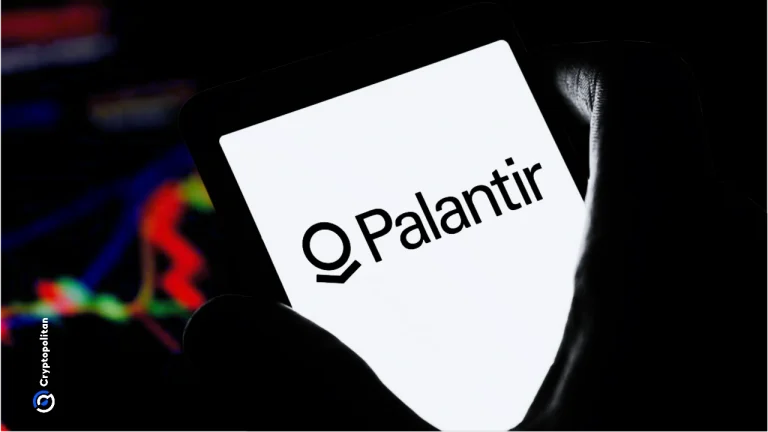Key Takeaways
- Palantir and Nvidia are integrating Nvidia’s CUDA-X and Nemotron AI models into Palantir’s Ontology framework, creating an advanced operational AI stack for real-time complex system management.
- This collaboration aims to build robust AI infrastructure beyond basic large language models, focusing on real-time data pipelines and specialized applications.
- Early adoption is evident with Lowe’s optimizing its supply chain using a digital replica and telecommunications firms developing an AI-native wireless stack for 6G.
- In healthcare, Eli Lilly is leveraging Nvidia’s AI for accelerated drug discovery, while Uber is enhancing its autonomous ride-hailing platform, and automotive manufacturers are progressing towards Level 4 autonomy.
Palantir and Nvidia Forge Operational AI Alliance
Palantir is collaborating with Nvidia to integrate Nvidia’s CUDA-X accelerated computing and Nemotron open AI models directly into its Ontology framework. This strategic partnership is designed to deliver a comprehensive full-stack solution for operational AI, specifically engineered to manage complex, live systems in real-time. The initiative focuses on developing a new AI infrastructure stack that includes advanced analytics tools, reference workflows, automation layers, and customizable agents, moving beyond the capabilities of generic large language models.
This cutting-edge technology will be integral to the Palantir AI Platform, tailored for institutions that rely on live data pipelines. As Nvidia CEO Jensen Huang announced, By combining Palantir’s powerful AI-driven platform with Nvidia CUDA‑X accelerated computing and Nemotron open AI models, we’re creating a next-generation engine to fuel AI-specialized applications and agents that run the world’s most complex industrial and operational pipelines.
AI Revolutionizes Retail and Telecommunications
Lowe’s has emerged as a key pioneer in adopting this integrated setup. The retail giant is constructing a detailed digital replica of its global supply chain. This allows its teams to make immediate, data-driven decisions informed by AI-generated insights. This virtual representation of its logistics network is designed for dynamic optimization, aiming to enhance cost management, supply chain agility, and overall customer service by shifting away from reliance on post-event analysis.
In parallel, Nvidia is collaborating with major communication entities, including Booz Allen, Cisco, MITRE, ODC, and T-Mobile. This alliance is focused on building America’s first AI-native wireless stack to support future 6G technology. This stack utilizes Nvidia AI Aerial, an infrastructure platform optimized for high-throughput AI network workloads, and is poised to enhance public safety through multimodal sensing systems. It will also enable AI-driven spectrum sensing and dynamic adjustments across wireless infrastructure. The architecture is being built with future advancements in mind, rather than solely addressing current needs.
Advancements in Healthcare and Autonomous Systems
Within the healthcare sector, Eli Lilly is partnering with Nvidia to develop a sophisticated supercomputer and AI factory dedicated to accelerating drug discovery. This extensive system is scheduled for completion in December and is set to become operational in January, fully owned and managed by Eli Lilly. The infrastructure will feature over 1,000 Nvidia Blackwell Ultra GPUs, all interconnected via a high-speed, unified network.
💡
The GPUs will power the AI factory, a dedicated environment where researchers can train and deploy AI models to significantly expedite the drug development process. Diogo Rau, Eli Lilly’s Chief Information and Digital Officer, noted that the current decade-long drug approval timeline could be dramatically reduced with these new AI capabilities, with tangible benefits anticipated by 2030.
Thomas Fuchs, Chief AI Officer at Eli Lilly, described the system as a groundbreaking scientific instrument, comparable to a powerful microscope for biologists. It allows researchers to run simulations of millions of experiments to evaluate potential drug candidates and uncover a wider spectrum of treatment options than previously conceivable.
Nvidia is also expanding its collaboration with Uber to enhance its DRIVE platform, particularly for autonomous ride-hailing services. This involves developing a global system that integrates both robotic drivers and human passengers. Additionally, automotive manufacturers such as Stellantis, Lucid, and Mercedes-Benz are committed to producing Level 4-ready vehicles designated for integration with the Nvidia DRIVE platform.
Companies like Aurora, Volvo, and Waabi are applying Level 4 autonomous technology to long-haul freight operations. The more predictable road conditions in this sector facilitate the deployment of these advanced autonomous solutions.
Expert Summary
Recent developments showcase significant advancements in AI infrastructure driven by strategic collaborations between leading technology firms. Palantir and Nvidia are merging advanced computing power and AI models into operational platforms designed for real-time management of complex systems. This movement towards sophisticated AI solutions is impacting key sectors, including retail, telecommunications, healthcare, and autonomous transportation, heralding a new era of accelerated innovation and efficiency across industries.

